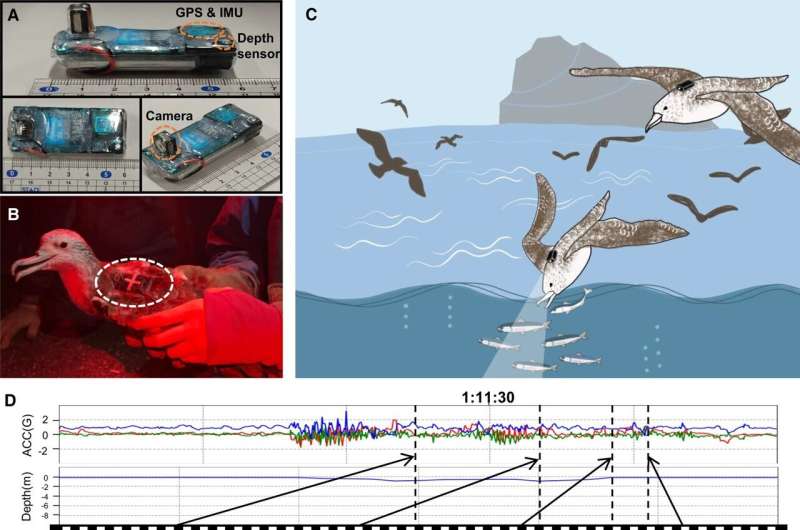This article has been reviewed according to Science X's editorial process and policies. Editors have highlighted the following attributes while ensuring the content's credibility:
fact-checked
peer-reviewed publication
proofread
AI-enabled bio-loggers capture rare bird behavior

For centuries, naturalists have braved trackless forests, windy clifftops, and the cramped confines of blinds and submarines, hoping to capture rare behaviors that might reveal important aspects of animal biology and ecology. Takuya Maekawa and colleagues sought to deploy wearable trackers, which have become common in animal biology, to capture rare behaviors for study.
As animal-borne video loggers can only capture a few hours of video due to battery limitations, a key challenge is deciding when to record. The authors created an on-device AI program capable of "unsupervised learning" to automatically find and record rare behaviors without supervision by human naturalists.
The findings are published in the journal PNAS Nexus.
First, an outlier detector program was trained on unlabeled accelerometer and water-depth data from seabirds to automatically determine when an unusual behavior is taking place. This outlier detector program was used to create streamlined outlier detectors—one for accelerometer data and one for water-depth data—that fit on a low-energy micro control unit on a logger with limited memory and computational power.
These detectors turn on a video camera of the logger when a rare behavior occurs in real time. The final AI-enabled bio-logger includes a video camera, three-axis acceleration sensor, GPS unit, water pressure sensor, thermometer, magnetometer, and illuminometer, which was then affixed to a streaked shearwater (Calonectris leucomelas).
The bio-logger weighs 23 g, less than 5% the weight of a shearwater. In field trials in 2022, the authors attached the bio-loggers to 18 birds.
The acceleration-based rare-behavior detectors recorded videos of vigorous head shaking near the beginning of flight that the authors hypothesize may function to remove nasal salt gland fluids and other external materials to increase subsequent flight efficiency. The depth-based rare behavior detectors captured 50 minutes of active foraging for fish—including preliminary below-water peeks before diving—behavior rarely caught on camera.
According to the authors, AI-enabled bio-loggers can be used on a range of species to capture many kinds of seldom-seen moments, including deep-sea mating rituals, the hunting strategies used for rare prey items, and the causes of death of wild animals.
More information: Kei Tanigaki et al, Automatic recording of rare behaviors of wild animals using video bio-loggers with on-board light-weight outlier detector, PNAS Nexus (2024). DOI: 10.1093/pnasnexus/pgad447
Journal information: PNAS Nexus
Provided by PNAS Nexus



















